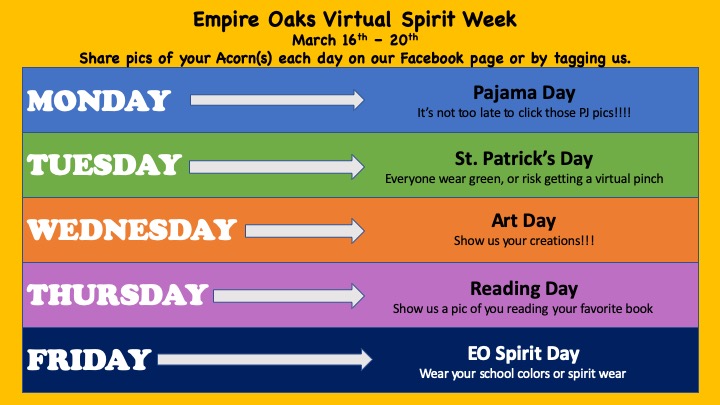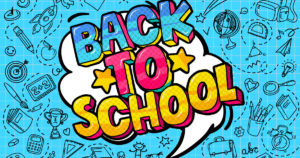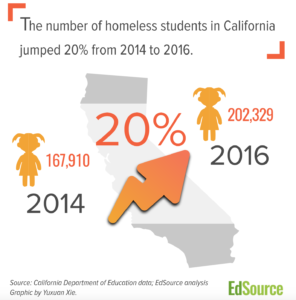 Crises are incredible opportunities to use communication to strengthen relationships with stakeholders. In the midst of COVID-19 and the drastic changes to the educational landscape, I’ve been watching my fellow California School Public Relations Association and National School Public Relations colleagues rise to the challenge to inform parents, staff and the public about school closures, free meals, distance learning, mental health tips and resources, community resources, and ways that their staff are going above and beyond the call of duty. And, in some cases, superintendents and support staff are being thrown into implementing crisis and ongoing communications tactics in ways they never have before.
Crises are incredible opportunities to use communication to strengthen relationships with stakeholders. In the midst of COVID-19 and the drastic changes to the educational landscape, I’ve been watching my fellow California School Public Relations Association and National School Public Relations colleagues rise to the challenge to inform parents, staff and the public about school closures, free meals, distance learning, mental health tips and resources, community resources, and ways that their staff are going above and beyond the call of duty. And, in some cases, superintendents and support staff are being thrown into implementing crisis and ongoing communications tactics in ways they never have before.
They’re also competing with an onslaught of communications from businesses and other organizations that are also communicating what they are doing to keep customers safe, business and product delivery options, and well-meaning free approaches to keep children, teens and adults entertained, in good health and more.
It’s enough to saturate any audience member. This also creates the real and huge risk of audience members tuning and checking out, scanning information quickly, and missing the important details.
Now, more than ever, it’s imperative for communicators to lead their organizations in strategic communication planning and implementation. This process is a cycle of the four step PR process: Research, Planning, Implementation, Evaluation.
More communication is not better. More tactics won’t help you reach your audience members. Targeted, strategic, well-messaged communications and tactics are what will allow you to be effective in reaching your audiences, and continue to increase and retain audience trust, and ensure your audience members are doing what you want them to do.
Because I will assume that you have already implemented your communications tactics, we’re going to begin with Evaluation, which is the fourth step in the 4-Step PR process. Typically, you’ll start with Research.
Step 1: Evaluation
I know it seems odd to start with the final step of the 4-Step PR process, but as I previously mentioned, this is a cycle. Most likely, you’ve already implemented the first three steps, but you probably haven’t had an opportunity to come up for air and evaluate. Evaluation is answering the questions “How have we been successful?” “How can we do better?” and “What do we need to adjust moving forward?”
Here are a couple of examples of what to evaluate:
- Environmental Scan: Evaluate where your organization is in this crisis. Most likely, your schools have been closed for at least one week, and distance learning plans are in place, and possibly implemented. Ask yourself whether daily (or twice daily) communications are still necessary, or if you can reduce communications to 2-3 days per week.
- Engagement, Click Throughs/Opens, Phone Message Logs: Review your social media engagement, email click throughs and open rates, and phone message logs. What patterns do you see? Are you seeing a dip in email open rates and click throughs later in the week? What questions are being asked on social media? Are your videos being viewed? What kinds of comments are being made? Take note of what seems to be engaging people the most, what questions need to be answered in FAQs, and other data that will help inform your future communications. Also, anecdotal feedback from audience members can be incredibly valuable.
Step 2: Research
Research essentially defines the problem. From the evaluation process, what problems have you uncovered?
- Who do you want to REACH? Are you reaching your audiences effectively, or are there holes?
- What do you want them to DO? Are your audiences acting/reacting in the intended ways from your previous communications, or do you need to provide clarification and/or other communication avenues (i.e. Setting up separate Facebook or Twitter profiles for answering IT questions from parents, staff)
- What messages do you want to communicate to each public that will encourage desired behavior, increase knowledge and change attitudes? Review your previous messages—are they working, do they need to be tweaked?
Step 3: Planning
The Universal Accreditation Board outlines a 10-step PR plan (which I also use with my clients) that will work for any situation.
- Goals: This is a state of being that you want to accomplish through your communications. Example: “For every audience ABC School District audience member to clearly understand what they should be doing during COVID-19 school closures and how the District will support and serve as a resource for families and employees.”
- Target Audiences or Publics:
- Who needs to know or understand?
- Whose advice or support do we need?
- Who will be affected?
- Objectives for Those Audiences:
- Objectives are shorter term.
- Define what behavior, attitude or opinion you want to achieve from specific audiences, how much to achieve and when.
- Think in terms of the awareness, attitude or action you desire – the end result.
- Strategies
- The road map or approach to reach objectives.
- Do not indicate specific actions.
- Use verbs such as demonstrate, collaborate, etc.
- Tactics: These are the specific activities conducted to implement strategies of a program.
- How you will use your resources to carry out your strategy and work toward your objectives.
- Examples: Meetings, publications, news releases, websites, billboards.
- Activities: Specific activities required under your tactics to carry out strategies.
- Informal plans often jump from objectives to activities.
- Vehicles or channels you will use to communicate are listed here.
- Evaluation
- How will you know if you are reaching your objectives?
- Measurement? Observation? Opinion? Feedback?
- Materials: What do you need to implement/execute your tactics?
- Budget: Out-of-pocket costs, staff time, volunteer energy, transportation, images, materials, fabrication, etc.
- Timetable and Task List
- What does what and when?
- Work backward from deadline or forward from start date
STEP 4: Implementation
Implementation involves actual messages sent through the communication channels and tools you will be using, and includes monitoring tools for execution. And then, once you have implemented your plan, then you will come back to evaluation.
Remember, this is a process and a cycle. But it is effective, and it works.
If you haven’t implemented this approach previously, it will likely feel cumbersome to go through these steps, particularly if you are already feeling overwhelmed. However, this will become like second nature once you’ve gone through the process. You will likely uncover ways to be more efficient and effective in your work, as well.
Have questions? Need clarification?
I’m always happy to hop onto a call to help answer questions and guide you through the steps. Feel free to contact me at 916.673.8868 or hvmcgowan@sounding-board.net. We’re in this together and we’ll get through this together.









